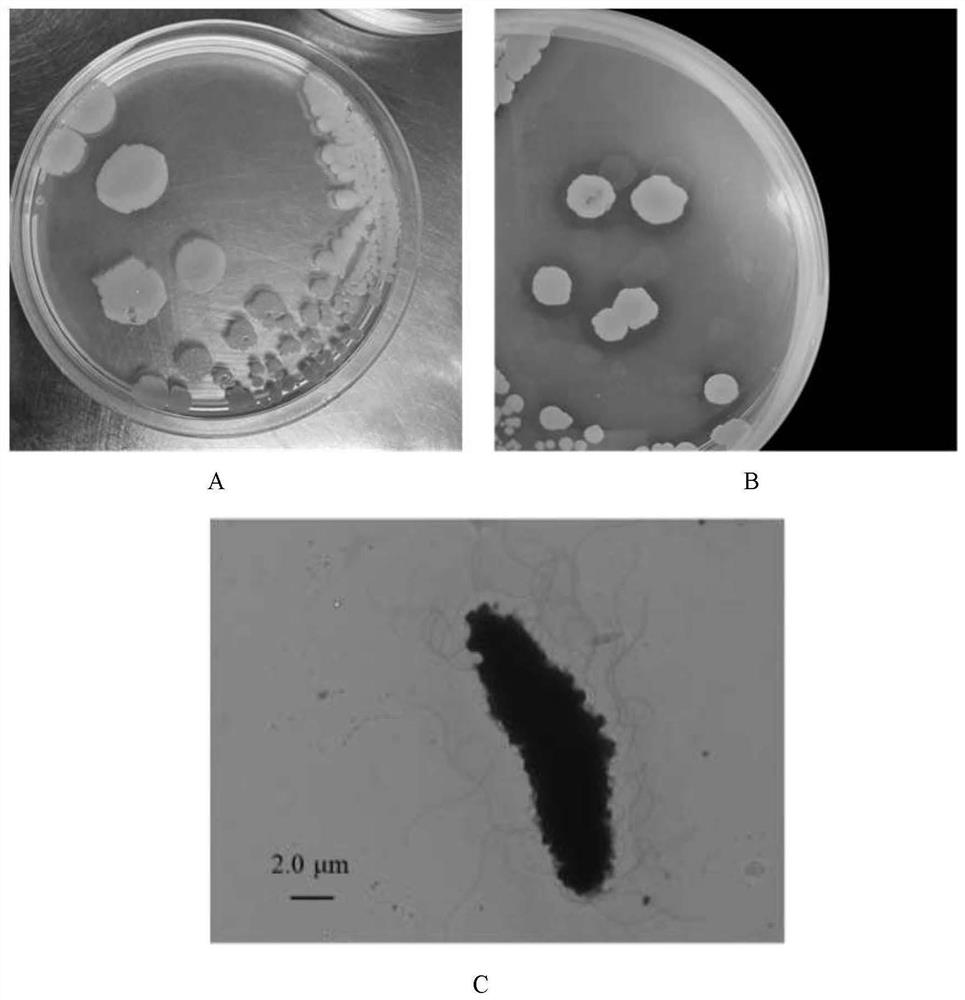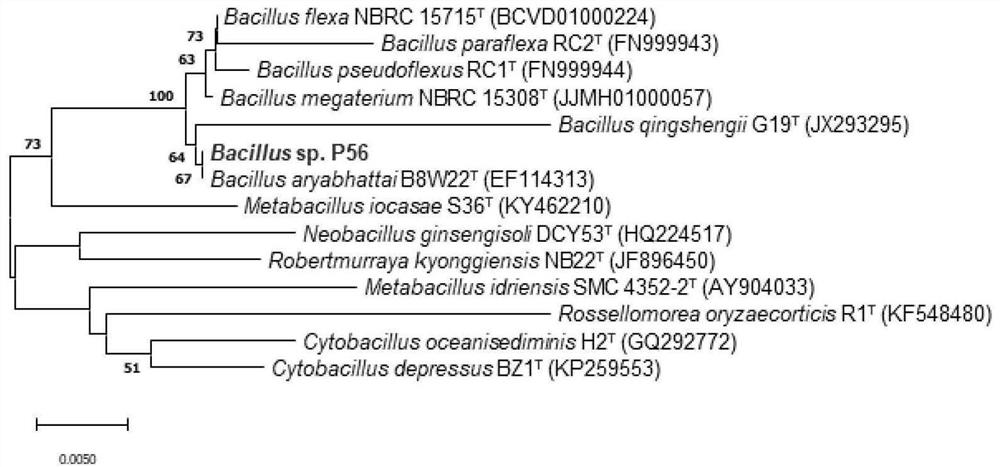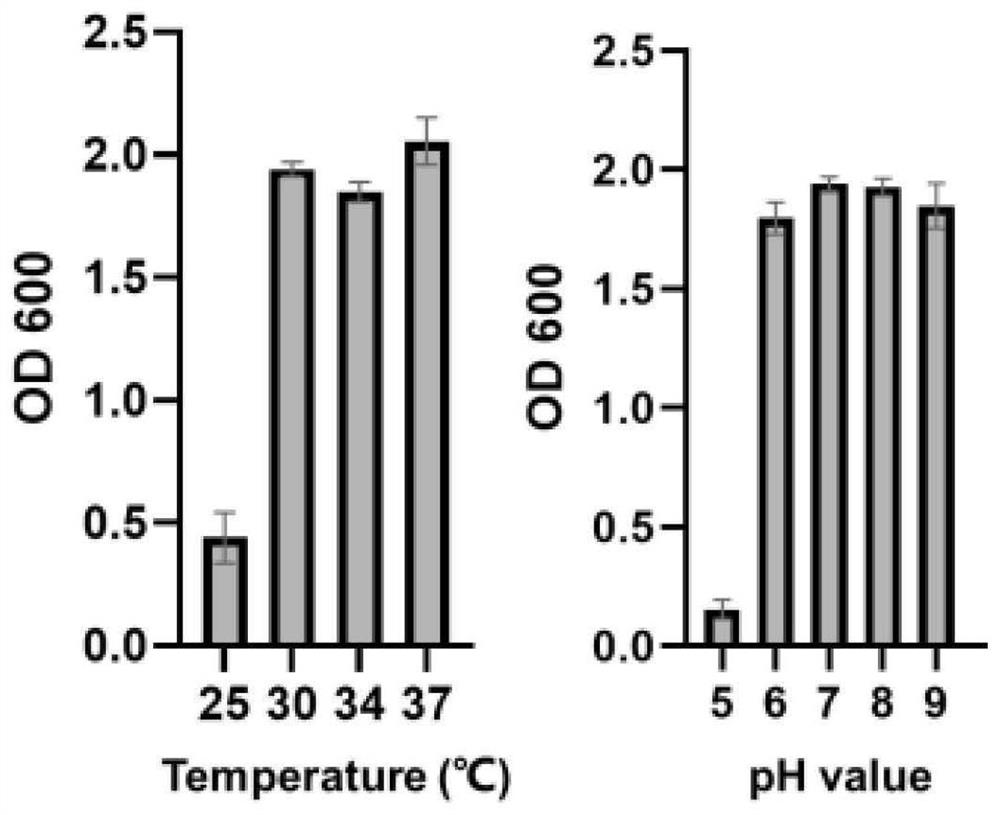Degradation strain of cyanophenyl herbicide and microbial inoculum produced by degradation strain
A technology for degrading bacteria and herbicides, applied in the field of biotechnology, can solve problems such as threats to the environment and human health, and achieve the effects of protecting human health, low production and use costs, and good repair effects
- Summary
- Abstract
- Description
- Claims
- Application Information
AI Technical Summary
Problems solved by technology
Method used
Image
Examples
Embodiment 1
[0033] Embodiment 1, isolation and identification of bacterial strain
[0034] The invention provides a bacterial strain capable of efficiently degrading benzonitrile herbicides and the bacterial agent produced therefrom. The bacterial strain used is Gram-positive bacteria P56, which is isolated from the soil of a pesticide factory in Changzhou, Jiangsu. The specific isolation and screening methods for strains are as follows:
[0035] Take 5.0 g of the soil sample and add it to 100 ml of inorganic salt (hereinafter referred to as MM) medium containing 0.2 mM bromoxynil octanoyl (hereinafter referred to as MM), culture it on a shaker at 30°C and 150 rpm for 5 days, and transfer it to fresh In the same culture medium, four consecutive enrichment cultures were carried out. Dilute the fifth-generation enrichment solution on MM solid medium containing 1mM bromoxynil octanoyl, culture at 30°C for 4 days, pick a single colony that produces a transparent hydrolysis circle on the plat...
Embodiment 2
[0037] Embodiment 2, laboratory degradation experiment
[0038] 2.1 Growth utilization and degradation of bromoxynil octanoyl by strain P56
[0039] High-performance liquid chromatography for the detection of bromoxynil octanoyl: take 20mL sample and add 5mL dichloromethane to extract the whole bottle, use anhydrous sodium sulfate to remove excess water in the organic phase, then take 0.25mL in a 1.5mL centrifuge tube, blow in a ventilated place After drying, add 1 mL of methanol to redissolve, filter through an organic phase filter membrane with a pore size of 0.22 μm, and detect by HPLC. Detection conditions: Shimadzu RID-10A is the high-performance liquid chromatograph; the chromatographic column is a C18 reversed-phase column with a size of 250mm×4.6mm; the column temperature is 30°C; the mobile phase is 100% methanol, and the flow rate is 1.0mL / min; the detection wavelength for 221nm and 229nm.
[0040] Detection of bromoxynil by high performance liquid chromatography: ...
Embodiment 3
[0059] Embodiment 3, soil degradation experiment
[0060] The vegetable garden soil was taken as the test soil sample. Pass the soil sample through a 2mm sieve, take a certain amount of octanoyl bromoxynil and bromoxynil powder and dissolve them in 100mL of methanol, and then soak in diatomaceous earth to completely absorb the pesticide. The soaked diatomaceous earth is placed in a fume hood to dry, and it is mixed into the soil so that the concentration of the pesticide in the soil is about 10mg / kg. Take 500g of each soil sample, insert the seed solution according to 10% inoculum amount, and cultivate it in a constant temperature incubator at 30°C. Take the soil sample inserted into the same amount of sterile MM liquid as a control, and the water holding capacity of the soil is kept at 60%. After culturing for 3 days, samples were taken, and the residual amount was determined by HPLC. The measurement results are shown in Table 1.
[0061] Table 1 Degradation of related pe...
PUM
 Login to View More
Login to View More Abstract
Description
Claims
Application Information
 Login to View More
Login to View More - R&D
- Intellectual Property
- Life Sciences
- Materials
- Tech Scout
- Unparalleled Data Quality
- Higher Quality Content
- 60% Fewer Hallucinations
Browse by: Latest US Patents, China's latest patents, Technical Efficacy Thesaurus, Application Domain, Technology Topic, Popular Technical Reports.
© 2025 PatSnap. All rights reserved.Legal|Privacy policy|Modern Slavery Act Transparency Statement|Sitemap|About US| Contact US: help@patsnap.com



